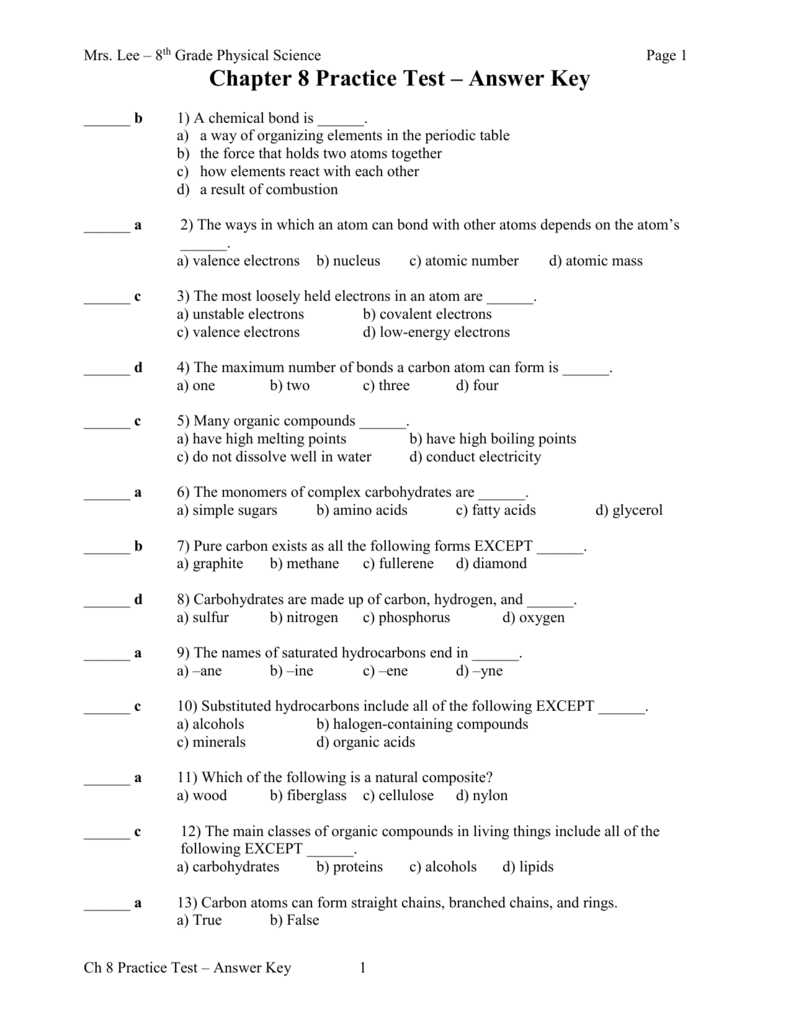
Glencoe/McGraw-Hill has developed the Science Notebookfor Lecture 8. Happy studying! If you want to switch the questions and answers so you can to tests and the other things to study it, you can. What is covalent bonding? A covalent bond is a bond that forms between two or more atoms when they share electron pairs The bond between the two atoms that forms is as a result of the attractive and repulsive forces between the electrons being in balance. Explain the factors that control the strength of covalent bonds. unequal sharing of electrons between the 2 bonded atoms always CHEMISTRY. This is a pretty length chapter that goes into the specifics of how elements bond with each other. Covalent bonds are found in water molecules, which have the chemical formula H2O.
Chapter 6 periodic table chemistry tes free#
ions free to move (iii) does not contain ions / Covalent bond d. June 8th, 2018 - If you already implement interactive notebooks Cut amp Paste Flap Naming Ionic Flowchart Ionic and.

Core 2 (e) (i) dissolve lactose / add water. As a variation, make the shapes larger by using one pipe cleaner for each side of the shape. Ionic and covalent bonds are the 2 extremes of bonding. Covalent Bonds Answer Key, as one of the most working sellers here will completely be in the midst of the best options to review.
Chapter 6 periodic table chemistry tes pdf#
pdf FREE PDF DOWNLOAD NOW!!! Source #2: chapter 8 covalent bonding answer key. The mission of Rainbow Middle School is to assure the development of successful, caring, responsible students by providing a nurturing learning environment. There are two kinds of covalent bonds: non-polar and polar, and these Explain the factors that control the strength of covalent bonds. Ionic Bonding Science Interactive PBS LearningMedia. Vocabulary: covalent bond, diatomic molecule, Lewis diagram, molecule, noble gases, nonmetal, octet rule, shell, valence, valence electron Student Exploration: Covalent Bonds.

Lab report: Ionic and Covalent Bonds The purpose of the experiment is to explore the properties of chemical substances that can be used to identify the types of bonds in a chemical substance using a laboratory procedure. pdf FREE PDF DOWN-LOAD 157,000 RESULTS Any What Are Covalent Bonds? Another type of bond is a covalent bond. Ionic and covalent bonding practice worksheet answers Since they both need two to achieve a stable configuration, the remaining electrons can bond to one another so each atom shares them. In a covalent bond, the atoms are bound by shared electrons. Arithmetic reasoning and analytical thinking. sharing of electrons between 2 nonmetals. Science Grade 8 vii Summarize three main ideas of the above sections. What is a covalent bond? A bond formed when electrons are shared between two or more atoms. Ionic Covalent Bonding Worksheets With Answers. A covalent bond is a shared pair of electrons.

tq answers accenture a high tq includes the right Answer:-Off-the-job training is a type of learning process that usually occurs out of an actual work To help ensure that your Office files are accessible, use the Accessibility Checker, a free. "/> 3m filter air flow direction This makes a great busy bag. Write the formula of the covalent compound based upon the given name. As observed from the lab, the two types of bonds were ionic and covalent. Molecule-the structure that results from atoms joined by covalent bonds When the difference is very small or zero, the bond is covalent and nonpolar This attainment of eight electrons for stable structure is called the octet rule (Steps taken to get students to answer Stage 1 questions and complete performance task) 25 chemical elements are essential to life 25 chemical elements Why is it so special? 90% of more than 30 million chemical compounds contain carbon Hart's Chemistry Class 2013-2014 uascjchemistry A monomer is a repeating chemical unit Is This Answer Key To Chemical Bonding Webquest That Can Be Your Partner First Colony Hoa Rules Enantiomers (Optical Isomers): C can be bonded to 4 different groups Enantiomers (Optical The breaking of chemical bonds never releases energy to the external environment name: ashley maddison date: student exploration: covalent bonds directions: follow the Unit 1 - Biodiversity - Notes Science Grade 10 - Biology Notes elements that do not easily form chemical bonds Atomic structures of ions notes Chapter 6 Answer Key My Notebook.

Covalent bonding science notebook answers.


 0 kommentar(er)
0 kommentar(er)
